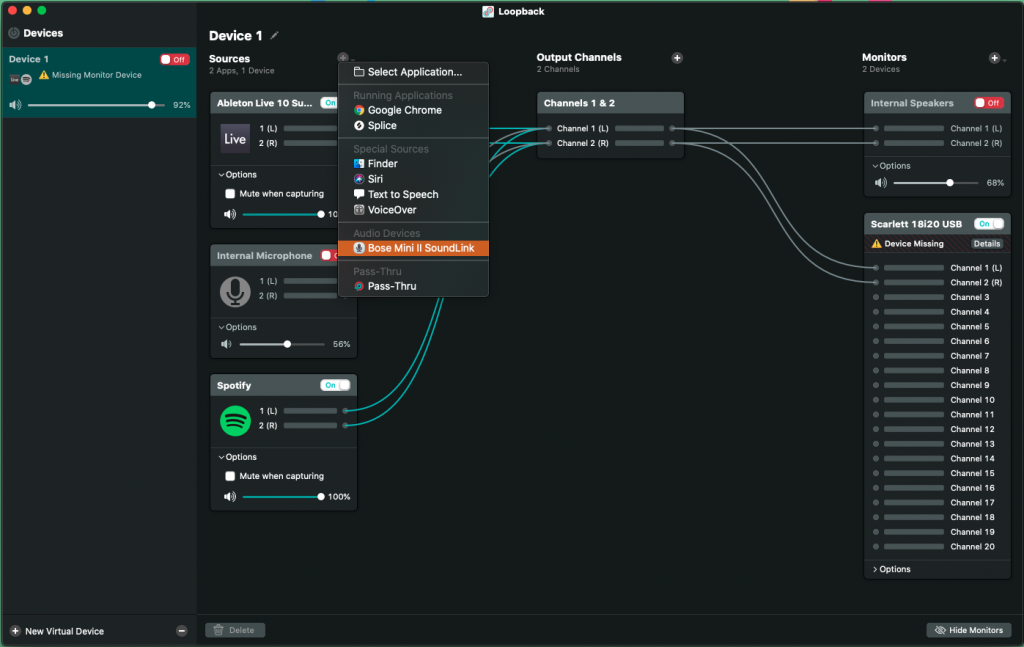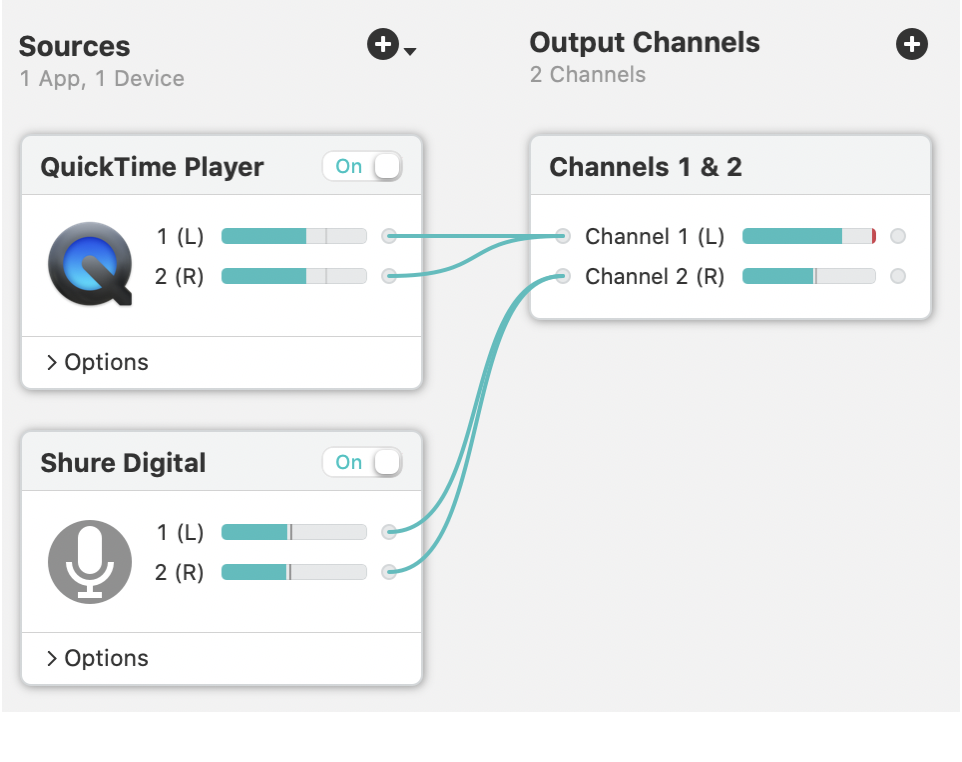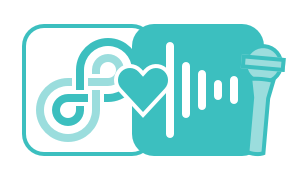
- Using loopback and soundsource software#
- Using loopback and soundsource Pc#
- Using loopback and soundsource plus#
- Using loopback and soundsource crack#
Then you can use it as an input for LoopBack, which can pose as a device. You can chain capabilities to your heart's delight - combine, process, output. Or go to screen share and share Logic, making sure to check the box for share computer. Then under share screen go to the advanced tab and select computer sound only. It has a lot of the functionality of LoopBack and SoundSource combined and is not just for Audio capture from apps or sources. IIRC, choose some input device in Zoom under mic and mute the microphone in zoom (take care: zoom mute function no longer works). If you are not familiar with Rogue Amoeba's tools, you do not know what you have been missing!įollow on: should have looked more at the section Library of Audio Hijack.
Using loopback and soundsource crack#
Have to crack those books on it, it's a bit more complicated and less intuitive for simple streams. Since I want to use this to play around with music devices/synths, the real solution is Mainstage. I will investigate putting Audio Hijack into the chain, which principally allows sound capture to a file but also allows dynamic insertion of processing and defining the output device. This is because both apps use the backend in parallel. Although in SoundSource you can select LoopBack as an input app, it actually does not process the audio. I did run into a caveat that is not well documented. Apart from controlling individual volumes, you can boost levels and insert Audio Unit processing. SoundSource also allows some sound manipulation in its path. AirFoil allows you to capture audio and direct it to AirPlay 1 & 2 devices. Fundamentally this allows redirecting all device or application sounds to a different output via Menu app with SoundSource or creating virtual device audio streams using LoopBack. They all rely on the same backend intercepting Apple's audio system architecture. Signature: b50373af40eb5472abbe4753d76f36ccĬomparison: 20191007 2326 Recording.Rogue Amoeba's tools are a "must-have" for sound lovers. Trimmed 0 samples ( 0,00ms) front, 0 samples ( 0,00ms end)įinal peak values Reference: 0,578dB Comparison: 0,578dBįinal RMS values Reference: -9,921dB Comparison: -9,921dB Initial RMS values Reference: -9,92dB Comparison: -9,821dBĭrift computation quality, #1: Excellent (0μs) Initial peak values Reference: -0,045dB Comparison: -0,045dB Spectrogram Window:Hann, Spectrogram Size:4096, Spectrogram Steps:2048Įnable Simple Waveform Measurement: Falseĭiscarding Comparison: Start=10s, End=10s Spectrum Window:Hann, Spectrum Size:32768

Non-linear Gain EQ:False Non-linear Phase EQ: FalseĮQ FFT Size:65536, EQ Frequency Cut: 0Hz - 0Hz, EQ Threshold: -160dB
Using loopback and soundsource software#
Record two to three captures using each player, as this will make it easier to see if the differences are random or between different software players.Ģ files one played with software player, one recorded with virtual cable : 100 % bit perfectĭeltaWave v1.0.45, T23:59:31.2100670+02:00 The actual file used for testing is referenced in that post: It might be interesting to use the same file for your own testing, because you can then also compare your results to what others have measured.

Using loopback and soundsource plus#
Rogue Amoeba has two bundles that reduce the cost: Loopback and Audio Hijack for 130 and those two apps plus Farrago and its. The virtual audio devices used by other system-wide audio adjustment software to manipulate audio are incompatible with SoundSources per-application. Gearslutz forum has a long-running thread where they are recording and reporting results of loopback of DAC/ADC converters using the same sound file: Farrago can be just another sound source into a Loopback interface. You can record whatever sound file works for you, although some large-scale orchestral music is probably a good idea. This covers everything up to about 48kHz so you can see any issues/artifacts just beyond the audible spectrum. For ADC/recording, I prefer to record at 24 bit with sample rate of 96kHz.

Use playback sample rate and bit rate that you normally use for listening, as that's what you want to compare. Remote methods Remote hooks Operation hooks Model hooks Connector hooks Tutorial: Application logic Defining boot scripts Defining mixins Defining middleware Middleware example Using current context Events Using promises Running and debugging apps. That sound card looks good enough for testing. Working with LoopBack objects Adding logic to models.

Using loopback and soundsource Pc#
To do that, you'll need to feed into an ADC input on another PC or an external ADC with a digital connector to you Macbook (USB, etc.). Yes, basically you need to record the analog output of your Macbook.


 0 kommentar(er)
0 kommentar(er)
